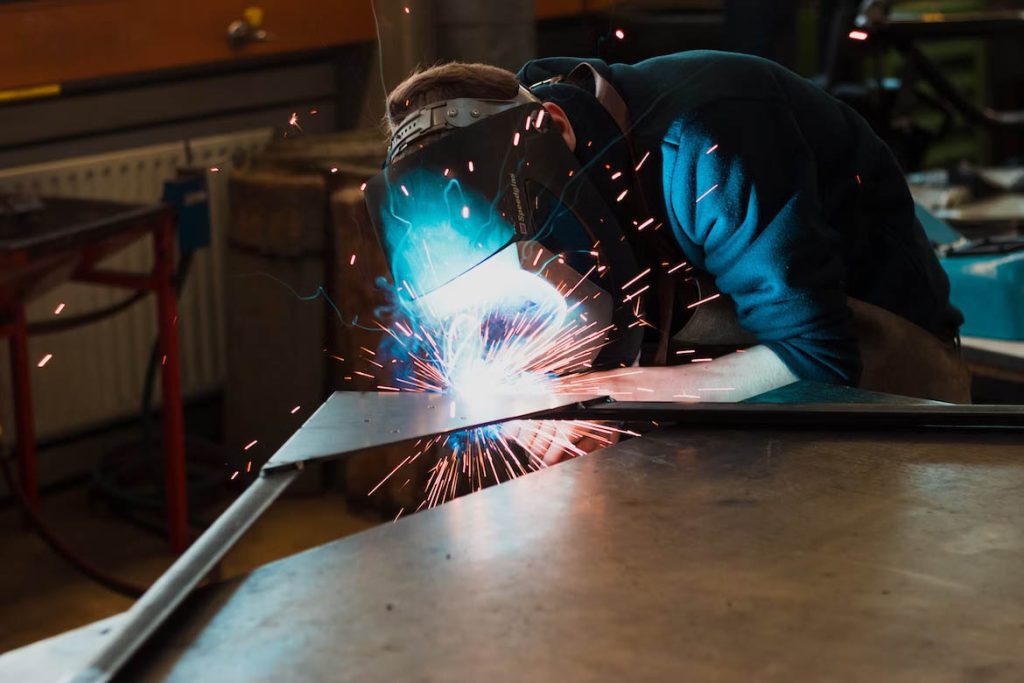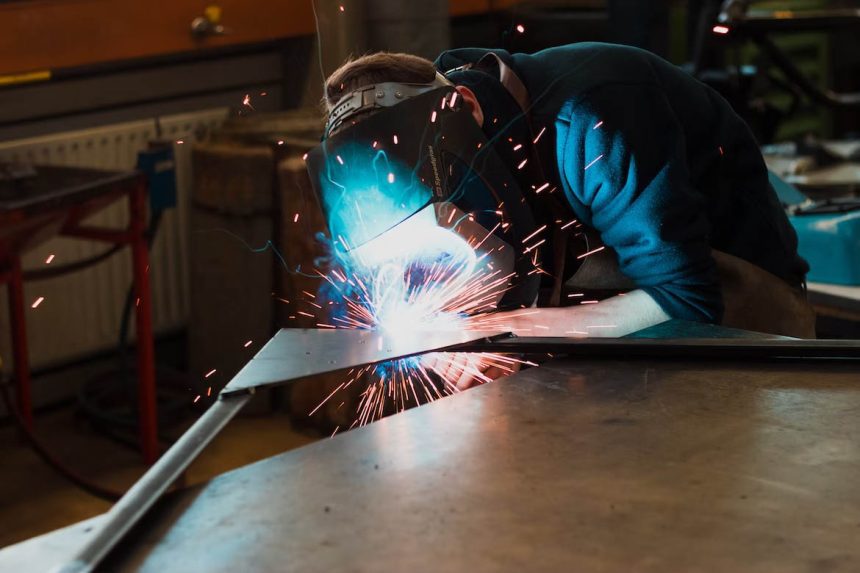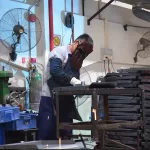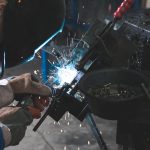Are you intrigued by the art of welding? If so, acquiring the necessary skills and proper training will not only ensure your safety but also enhance your expertise. Welding encompasses a wide array of techniques and welding types, making it an exciting field to explore. Whether you aspire to pursue a career in welding or simply want to expand your skill set, this comprehensive guide will provide you with invaluable insights. In this article, we will delve into the definition of welding, highlight the numerous benefits of learning this craft, and offer practical tips on how to master the art of welding effectively.
How To Learn To Weld in 4 Easy Steps (Plus Benefits)
Welding Town
Unveiling the Art of Welding
Welding is a remarkable construction process that involves fusing metal pieces together using heat, pressure, or a combination of both. With a plethora of welding techniques, equipment, and processes available, the outcome of a weld can be tailored to specific requirements. To shed light on the tools commonly used by welders, here are some notable examples:
- Stick welders: Resembling a sturdy tree branch, a stick welder consists of a coated wire electrode.
- Wire feed welder: This type of welder employs a continuous electrode spool, ensuring a constant feed of welding material.
- Oxy-acetylene welders: Utilizing both oxygen and acetylene, these machines generate high heat and pressure through an open flame.
- TIG welders: TIG welders employ an electric arc on a robust, pointed tungsten point to create a molten metal pool, facilitating the welding process.
- Flux core welders: This welding system utilizes a thin wire electrode with a chemical powder in the center, which forms a protective layer over fresh welds. This layer shields the weld from oxygen and aids in proper settling.
- Welding helmet: A specialized piece of headgear, the welding helmet shields the welder’s eyes from the intense luminosity of fresh welds.
- Welding gloves: Typically made of thick leather or faux material, welding gloves protect the welder’s hands from extreme heat and molten metal.
Welders must prioritize their safety by employing Personal Protective Equipment (PPE) such as gloves, headgear, and suitable clothing, and ensuring good ventilation in their work environment.
The Remarkable Benefits of Welding
Acquiring welding skills offers an array of benefits that extend beyond the mere act of joining metal pieces. Let’s explore some of the compelling advantages that come with learning to weld:
1. Working with Your Hands: Unleashing Creativity
One of the most significant advantages of welding is the opportunity to engage in hands-on work. Many individuals are drawn to construction occupations as they seek a unique work environment that stands apart from traditional office-based roles. By working with your hands, you develop strength, coordination, and stamina. Additionally, welding enables you to create intricate and distinctive welds, both for professional projects and personal endeavors. Embracing welding allows you to enhance your creativity by learning new techniques and establishing a personal style that sets your work apart.
2. Independence and Entrepreneurship: Crafting Your Own Path
Some welders choose to become contractors or even start their own welding businesses. Even if you work for an established company, welding often entails working autonomously. Embarking on a welding career presents an excellent opportunity to work independently, taking full responsibility for your accomplishments in the industry. Independent welders enjoy the freedom to set their own working hours, define their unique style, and determine pricing, granting them unparalleled flexibility. Welders often cherish the solitude that accompanies their craft, relishing the chance to create their distinctive welding style and leave a lasting impact.
3. Versatility: A Multifaceted Skill
Welding skills find application across various industries and projects. Whether it’s the automotive industry, transportation sectors, or construction, welders are in demand for welding vehicle components, aircraft parts, train cars, equipment, tools, and steel frames. Learning the art of welding opens up a wealth of career opportunities, allowing you to pursue diverse paths and engage in exciting projects. With such versatility, welders can enjoy enhanced career flexibility, explore options with higher wages, and avail themselves of superior benefits.
4. Competitive Wages: Valuing Your Craft
Welders have the potential to earn competitive wages, with an average annual salary of approximately $39,843. As you gain experience or venture into different industries, your earning potential can increase significantly. For instance, specializing in aircraft welding often commands higher compensation compared to automotive welding due to the distinct skill set required. A competitive wage empowers welders to plan their personal finances more efficiently, save for retirement, and feel valued by their employers, thus enjoying greater job satisfaction.
5. Welding as a Hobby: Unleashing Artistic Expression
Welding skills can extend beyond professional endeavors and become a captivating hobby. By utilizing your welding expertise for personal projects, you can create additional sources of income, find entertainment, and continuously refine your skills outside of traditional work settings. Some welders even establish side businesses where they sell welded artwork or apply their craft to personalize vehicles. Engaging in welding as a hobby allows you to supplement your primary income while expanding your reputation and discovering new techniques.

The Path to Mastery: Learning to Weld
Mastering the art of welding involves following a structured approach that emphasizes technique and safety precautions. Here are four fundamental steps to guide you on your journey:
1. Determine the Metal to Weld
Welding encompasses various metals, each requiring distinct techniques and training. Before embarking on your welding career, take the time to decide which metal you wish to specialize in. For example, steel and aluminum welding necessitate different approaches due to the disparity in melting points. Higher temperatures and more volatile materials demand specialized techniques and safety measures. Conduct thorough research to understand the requirements associated with each metal and the specific techniques relevant to your chosen specialization.
2. Pursue an Apprenticeship or Technical Certification
To acquire comprehensive education and hands-on experience, consider pursuing an apprenticeship or obtaining a technical certification in welding. An apprenticeship offers a unique opportunity to work alongside seasoned experts, learning techniques directly from those with invaluable experience. Welder’s unions often facilitate apprenticeships, providing a platform for entry-level welders to join forces with industry professionals. Alternatively, you can opt for a post-secondary program that grants a technical certification in welding. These programs typically combine classroom instruction and practical training under the guidance of certified instructors, albeit with potential tuition fees.
3. Gain Practical Experience
Upon completing an apprenticeship or obtaining a certification, you can seek entry-level positions as a welder. Local automotive shops or metal fabricators often offer opportunities for beginners. Typically, employers require a certification or apprenticeship as a minimum requirement for entry-level employment. Starting in an entry-level position enables you to accumulate firsthand experience and refine your welding technique. Additionally, networking within the industry allows you to build a professional support network and explore further job prospects.
4. Embrace Lifelong Learning
Welding is a continual learning process that rewards those who remain curious and dedicated. Practice your welding technique whenever possible and seize opportunities for continuous learning. If your employer offers professional development training, embrace these chances to acquire new skills and processes. Expanding your skill set can lead to higher wages, increased versatility, and the ability to explore alternative industries within the welding domain.
Conclusion
Embarking on the journey to become a skilled welder is a rewarding and enriching endeavor. By understanding the art of welding, appreciating its benefits, and following a structured learning path, you can master this craft and unleash your creativity. From working with your hands and relishing independence to enjoying versatility, competitive wages, and the option to transform welding into a fulfilling hobby, welding offers a world of possibilities. Embrace the steps outlined in this guide, immerse yourself in the art of welding, and let your passion for this timeless craft ignite your success.












